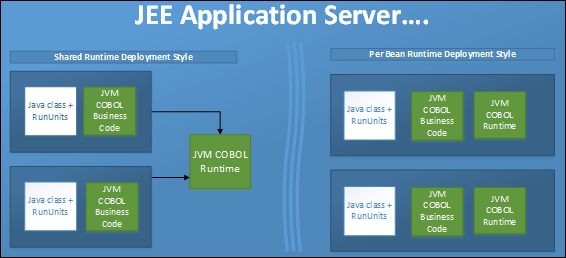Run-time Considerations
When choosing how to deploy the JVM COBOL run-time system that is required by JVM application code, consider the deployment options illustrated in this diagram:

- Shared Runtime Deployment Style
- Deploy the run-time system separately, as a shared module or object in your application server.
- Per Bean Runtime Deployment Style
- Package the run-time system in a deployed archive file, such as an enterprise archive file (.ear) or web archive file (.war).
Each Runtime Deployment Style has its advantages:
| Shared | Per Bean |
|---|---|
|
|
In this tutorial, you deploy your JVM COBOL runtime using the Per Bean Runtime Deployment Style, meaning that the runtime is packaged as an archive file and deployed with the application.